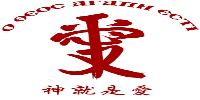在東正教會中,沒有完整的尊崇馬利亞的理論。因此只能提出一些看法。
看來,這種尊崇的第一個聖禮儀表達方式一定是節慶,在基督最重要的節慶後一天結束。第一個馬利亞節慶,可能是在12月26日,這與慶祝基督的誕生有直接關係。
“報喜 “最初是給聖誕節前的星期天起的一個不知名的名字。這顯示對馬利亞的尊崇在基督論層面,以及教會對她在神道成肉身中奧秘地位的。即使在今天,拜占庭式的馬利亞的主要聖像畫是母子像,對東正教來說,這基本上是一個化身的形象。
舊約中有關聖殿的全部術語及其在尊崇的象徵意義都適用於馬利亞。
聖殿及其所有的聖器總是被拜占庭的讚美詩作者理解為宣告和預示馬利亞的神秘的各種 “維度 “的預言家。
她是聖殿,是門,是燭台,是百里香,是聖地。因此,當我們考慮尊崇聖母的問題時,我們發現它不是源於任何特定的啟示,而是主要源於聖禮儀崇拜的經驗。換句話說,這不是對馬利亞的神學反映,她生出了對馬利亞的尊崇。正是聖禮儀,作為 “人間天堂 “的體驗,作為與天國現實知識的交流,作為愛和奉獻的行為,一點一點地揭示了基督之母在救恩經濟和 “未來時代 “的奧秘中的獨特地位。
馬利亞不是教會講道的一部分,講道的唯一內容是基督。馬利亞是教會的內在奧秘,是與基督的共融。教會宣揚基督而不是馬利亞。但與基督的交通揭示了馬利亞是教會內的神秘喜悅。一首讚美詩說:”喜樂的人啊,所有的受造物都在你裡面歡喜”。
=======
short history of the honorary veneration of Mary
There is no complete theory of the veneration of Mary in the Orthodox Church. So only a few observations can be made.
It seems that the first liturgical expression of this veneration must have been the feasts, concluded on the day after the most important feasts of Christ. The first feast of Mary, may have been on December 26, which is directly connected with the celebration of the Nativity of Christ.
“Annunciation” was originally the unname given to the Sunday before Christmas. This shows the Christological dimension of the veneration of Mary and the Church’s treatment of her position in the mystery of the Incarnation. Even today the main Byzantine icon of Mary is that of the Mother and Child, which for the Orthodox Church is basically an image of the Incarnation.
To Mary is applied the whole terminology of the Temple in the Old Testament, and its symbolism in worship.
The Temple and all its sacred vessels were always understood by Byzantine hymn writers as heralds announcing and foreshadowing the various “dimensions” of the mystery of Mary.
She is the Temple, the Gate, the Candlestick, the Candlestick, the Thyme, the Holy of Holies. Thus, when we consider the question of Mariological veneration, we discover that it stems not from any particular revelation, but primarily from the experience of liturgical worship. In other words, it is not a theological reflection of Mary, who gave birth to her honorific veneration. It is the liturgy, as the experience of “heaven on earth”, as communion with the knowledge of heavenly realities, as an act of love and consecration, that revealed, little by little, the unique place of the Mother of Christ both in the economy of salvation and in the mystery of the “age to come”.
Mary is not part of the Church’s sermons, the only content of which is Christ. Mary is the inner mystery of the Church as communion with Christ. The Church preaches Christ not Mary. But communion with Christ reveals Mary as the mystical joy within the Church. “Rejoice in thee, O joyful one, all creation,” says a hymn.


